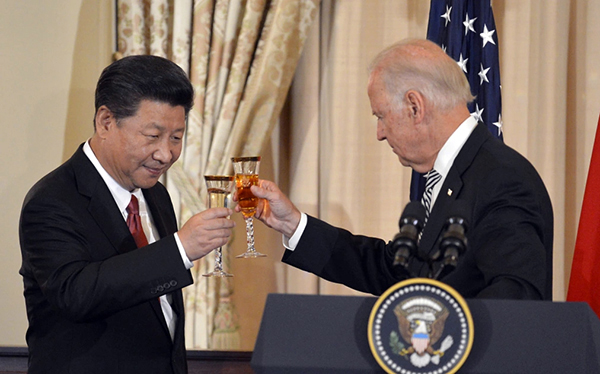

In its first year in office, the Joe Biden administration has focused on a five-part strategy to compete with China, and sees India’s role as “critical” in both pushing back against China, and advancing an affirmative vision of the Indo-Pacific, National Security Council (NSC) senior director for China Laura Rosenberger said on 19 January.
Speaking at the launch of Strategic Asia 2020-21 – a report on challenges emanating from US-China strategic competition, deglobalisation, and Covid-19 for countries and regions in the Indo-Pacific, Rosenberger said the administration’s approach to China rested on the analysis that while competition is particularly pronounced in the Indo-Pacific, it is playing out globally.
When asked about how the US saw India’s role in this competition with China, at a time when India is facing China’s military aggression at the border, Rosenberger said, “We have taken a number of steps to deepen the partnership with India…India’s role is quite critical.”
And the fact that the leaders of the Quadrilateral Security Dialogue (Quad) – India, US, Australia, and Japan – had met twice in the past year, once virtually and once in-person, was proof of the importance of the format, she said.
Acknowledging that Beijing had been “engaging in provocations” along India’s border, Rosenberger said that India was an important partner not just in terms of pushing back China but also on a range of other issues, from vaccines to technology, as well as for advancing a different and affirmative vision of the Indo-Pacific.
Rosenberger said that the first element of the broader US strategy on China involved “investing in ourselves”.
“You can’t win a competition with only defence,” she said. This entailed, over the past year, battling the pandemic, staving off the prospects for recession, decreasing unemployment, ramping up vaccination, investing in infrastructure, diversifying supply chains to ensure that US was not dependent, and investing in the country’s technological edge.
The second element, she said, was “investing in allies and partners”. This included intensive diplomacy with European allies and partners, harmonising differences, giving momentum to Quad, and deepening ties with the Association of South East Asian Nations (Asean), among other steps.
The third element was “shaping the international environment around China”, which involved re-engaging with multilateral platforms, and reinforcing deterrence in the Indo-Pacific, among other steps.
Rosenberger said the fourth element of the administration’s strategy was based on “defending our values”. This involved imposing costs on China for its actions in Xinjiang and Hong Kong, ensuring global norms and institutions were consistent with democratic values, “strengthening democracy at home and abroad”, and showcasing how democracy delivered.
The final element of the strategy, the NSC official said, was “responsibly managing competition” with China. This entailed maintaining channels of communication at the leader-level and installing “guardrails” to ensure that competition did not descend into conflict. Rosenberger cited the example of the Biden-Xi Jinping virtual summit in November as evidence of this engagement, and said these engagements provided an opportunity to set the terms of competition as well as discuss areas where interests align.
















